
Abusir Pyramids Complex & Necropolis
Abusir Necropolis is one of the most mythical and magnificent archaeological attractions ever made across the golden blessed lands of lower Egypt that dated back more than 4500 years. This hidden archaeological area is home to the ruins of a number of pyramids that act as a part of the pyramids fields of Memphis and its Necropolis which was labeled by the UNESCO World Heritage Site. This miraculous area is a very vivid piece of art filled with lost gems and wonders.
The informational wealth and incredible beauty of this spectacular attraction will show the dedication, royal power, and religious faith of ancient Egyptian Pharaohs who wished to honor the gods and themselves by creating colossal wonders that attempted to stand the test of time. In this incredible article, everyone will learn some extraordinary facts and glory about this magnificent landscape of Abusir Necropolis.

Abusir Complex History
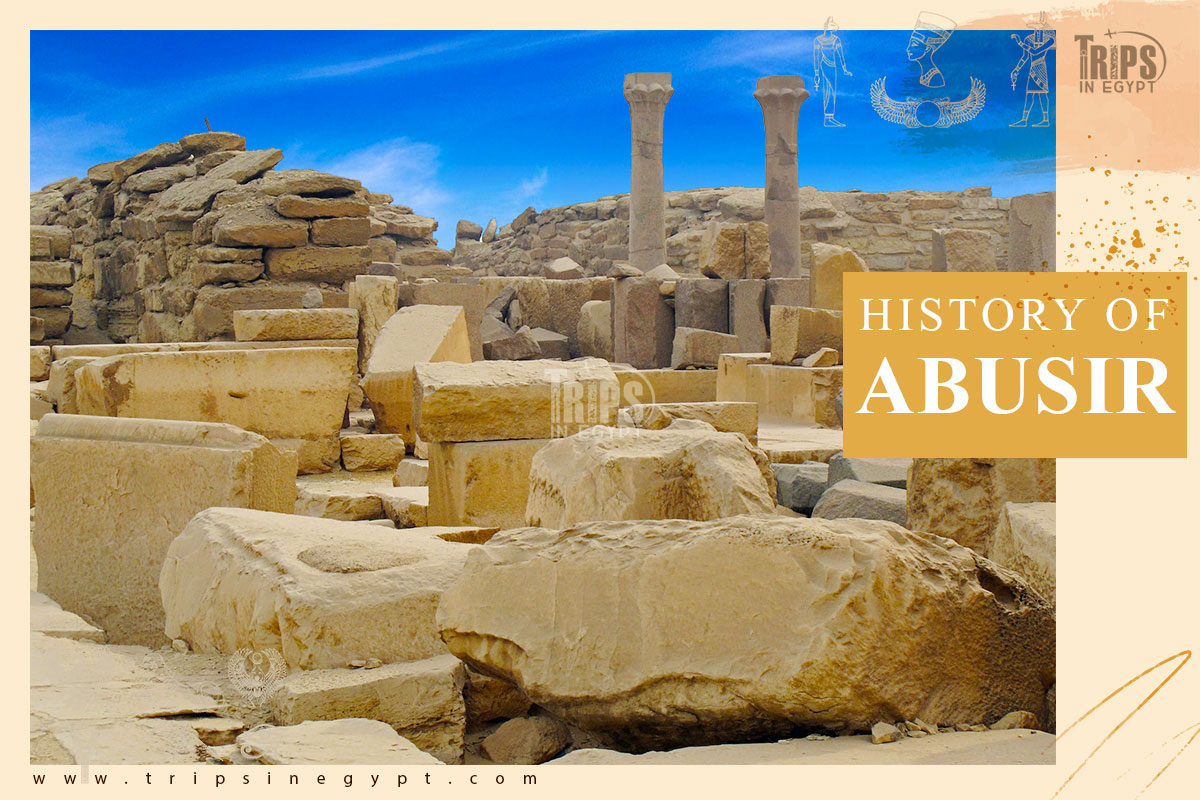
Abusir pyramids were known as the house of Osiris which refers to the Greek town of Busiris which was located close to its necropolis. Abusir is an incredible pyramids complex which is made of 14 pyramids that date to the old kingdom of Egypt (2700 – 2200 BC) where it served as a prestigious burial site that was near the golden capital city of Memphis. It served as an elite necropolis and a cemetery for the residents of the city of Memphis. It was renowned for creating a number of marvelous pyramids and monuments that dates to the 4th Dynasty (2613 - 2494 BC) and the 5th Dynasty (2494-2345 BC) pharaohs who wished to be buried in a different site.
Absuir means the place of worship of the god Osiris who was the ruler of the land of the dead in the underworld. A number of great rulers such as Serkaf (2513- 2506 BCE) built the sun temple Nekhen-Re plus their successors Neferirkare, Ran Eferef, Sahura, and Nyuserra. Abusir became a cemetery for the common people. A number of tombs belonging to chancellors of Persian kings were located across the entire area.

Location & How to Get to Abusir Necropolis
Abusir is found in the Giza governorate in Al Badrashen, just a few km north of the Saqqara area. It acted as an elite and prestigious cemetery for the immortal capital city of Memphis. The entire pyramids complex was named after the village of Abusir, in the county of Badrashin in the Giza area.
The entire Abusir pyramids complex can be found on the plateau of the western desert across the edge of a marvelous cultivated plain. The Saqqara area is found across the south while the Giza pyramids are found on the north. 25 km (15 mi) southwest of Cairo

Famous Abusir Pyramids Complex
The golden Abusir area has 14 pyramids which were known as the primary royal necropolis of the 5th dynasty. The quality of the 5th pyramids is very inferior to the pyramids of the 4th dynasty which is due to an unstable economy and a decrease in royal authority which would explain why they have a smaller size compared to their predecessors. All the pyramids have the design of a step pyramid and the biggest one of them is the Pyramid of Neferirkare.
Pharaoh Userkaf was the first ruler of the 5th dynasty to construct a pyramid that acted as the first-ever model of a solar temple and many more were followed by his successors. The pyramid of Userkaf was located across the enclosure wall of the golden Step Pyramid of Djoser at the immortal Saqqara. The royal pharaohs moved one to create pyramids in Dashur. The place has a number of Unfinished pyramids all over the area.
1. Sahura Pyramid
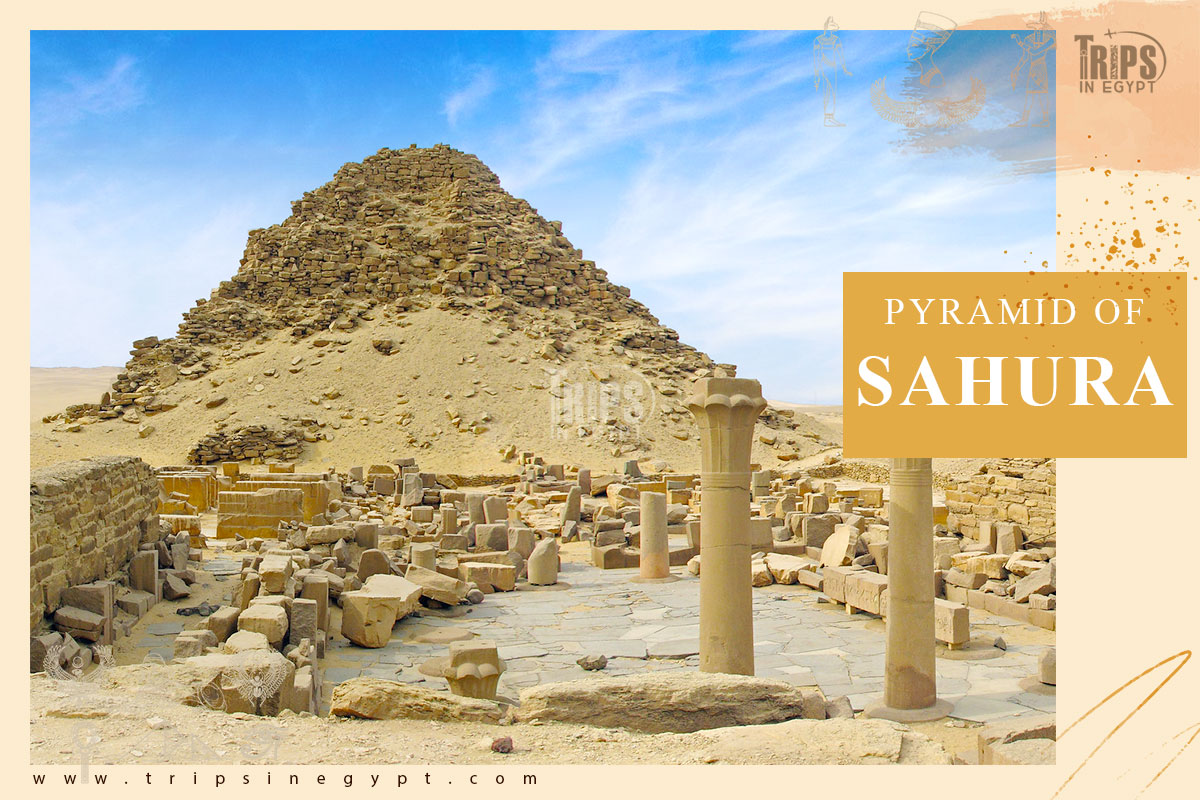
Sahura was an ancient Egyptian pharaoh who ruled during the Fifth Dynasty. He was the son of Pharaoh Userkaf and is believed to have ruled for about 12 years from 2487 to 2475 BC. The pyramid at the necropolis of Abusir was originally about 68 meters (223 feet) high and was built of limestone blocks. The pyramid contains a base length of 52.5 meters (172 feet) which was originally covered with white Tura limestone casing which was later stripped away to create more construction projects.
The pyramid complex included a valley temple that was used for the purification of the pharaoh's body prior to its entombment in the pyramid. The pyramid has six or seven steps and a mortuary temple at its base. The mortuary temple was connected to the pyramid by a causeway. The interior of the pyramid was divided into several chambers which are a subterranean chamber, an antechamber, and a burial chamber. The burial chamber contains the pharaoh's sarcophagus which was made of red granite.
There are a number of remains which is found in the bode museum in berlin and the Egyptian museum in Cairo. Across the pyramid are a number of mythical scenes of ships and hunting scenes. The pyramid has several passages and passages that were designed to confuse potential tomb robbers. The pyramid of Sahura is in ruins which provides important information about the architectural and engineering skills of the ancient Egyptians.
2. Neferirkare Pyramid
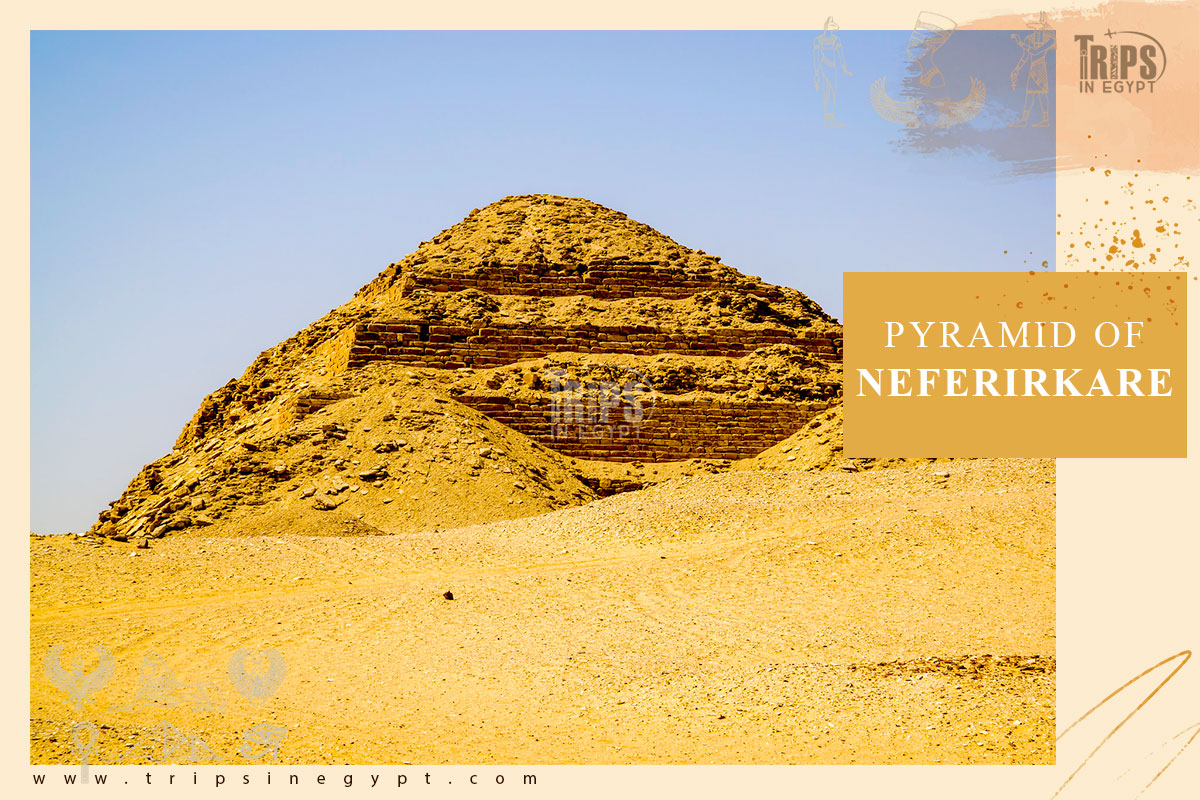
The Neferirkare Pyramid was built for the ancient Egyptian Pharaoh Neferirkare Kakai, who ruled during the Fifth Dynasty, around 2450 BC. The pyramid was located at the necropolis of Abusir in Lower Egypt. It provides important information about the architectural and artistic skills of the ancient Egyptians. The Neferirkare Pyramid was originally about 70 meters (230 feet) tall and was constructed of limestone blocks. The pyramid had a base length of about 53 meters (174 feet) and was covered with white Tura limestone casing. A discovery was made within the pyramid which is made of papyrus which dates to the reign of Pepi II plus some cult objects and letters.
The pyramid was constructed across many stages and was surrounded by a large complex that included a valley temple, a mortuary temple, and a causeway that connected the two temples. The marvelous interior of the pyramid consisted of several chambers which are a subterranean chamber, an antechamber, plus a burial chamber. The burial chamber contained the pharaoh's sarcophagus which is made of red granite. The pyramid holds a number of passages and chambers that were designed to confuse any tomb robbers.
3. Nyuserre Pyramid

The pyramid of Niuserre is an ancient Egyptian pyramid located in the necropolis of Abusir in Lower Egypt. Niuserre was a Pharaoh of the Fifth Dynasty who ruled around 2445–2421 BC. The pyramid of Niuserre was originally about 70 meters (230 feet) tall and was constructed of limestone blocks. The pyramid had a base length of about 53 meters (174 feet) and was originally covered with white Tura limestone casing. The pyramid was surrounded by a complex that included a mortuary temple, a valley temple, and a causeway connecting the two temples. This open courtyard has a number of Papyrus-form columns of red granite.
The interior of the pyramid consisted of several chambers, including a subterranean chamber, an antechamber, and a burial chamber that contains the pharaoh's sarcophagus, which was made of red granite. The pyramid also had several passages and chambers designed to confuse tomb robbers. The pyramid of Niuserre is in ruins, and the remains provide important information about the architectural and engineering skills of the ancient Egyptians.
4. The Smaller Pyramids

There are a number of small pyramids which is located all over the area which are:
- The pyramid of Queen Khentkawes II was the mother of king Neferefre & Niuserre and the wife of Neferirkare.
- Lepsius Pyramid which belonged to a queen plus the name of the vizier Ptahshepses is located among the builders' marks, which dates the pyramid to the reign of Pharaoh Nyuserre. Lepsius Pyramid is known to be the queen’s pyramid from the Fifth Dynasty.
- The incomplete pyramid of Shepseskare.
- The Unfinished Pyramid of Neferefre was built during the 5th dynasty (around 2450 BC) for the Pharaoh Neferefre. The pyramid was unfinished at the time of Neferefre's death and was subsequently completed as a smaller mastaba-style tomb. The exact size and design of the original pyramid are still being determined, as the monument has been heavily damaged and only fragments remain.

Mastabas of Courtiers at Abusir

The tombs have a number of high officials and family members located at the open court of the king’s pyramid:
- The mastaba of Prince Nakhtkare who is the son of Raneferef or Nyuserre.
- The mastaba of Ptahshepses who acted as a vizier under Pharaoh Nyuserre.

Abusir-South Tombs
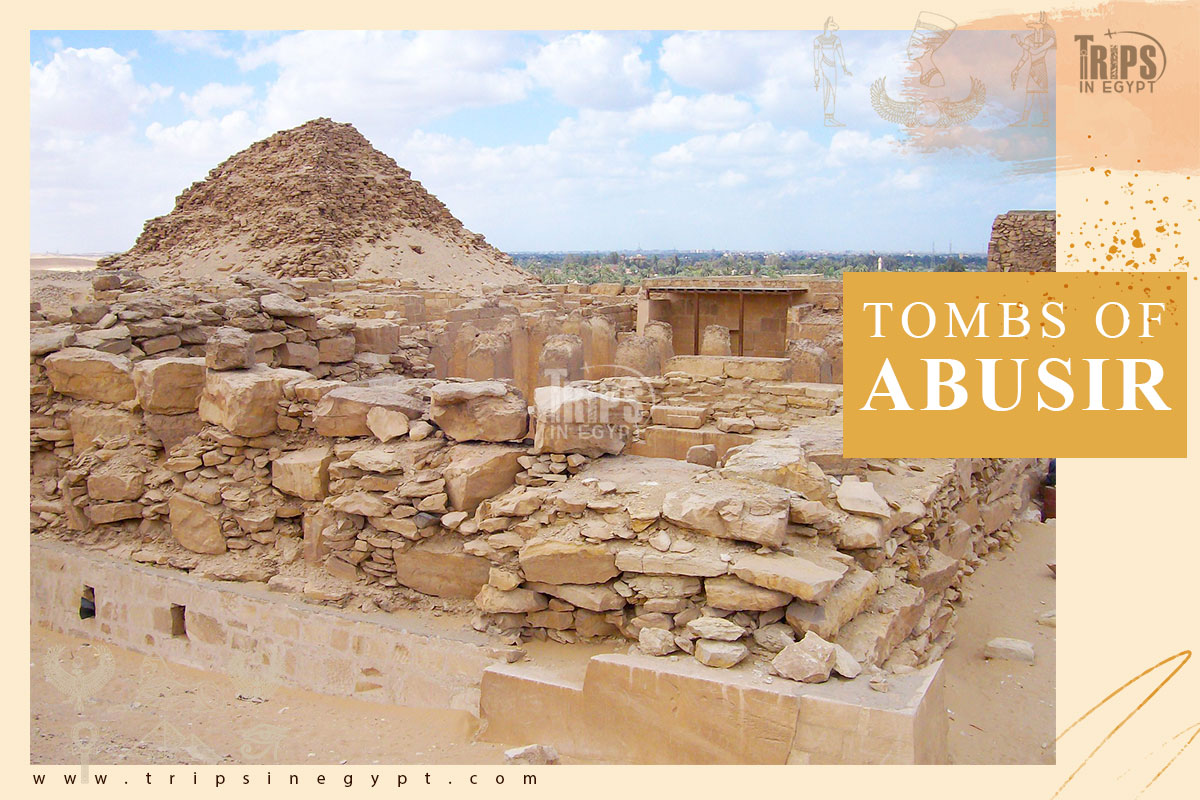
Located just north of Saqqara is a number of marvelous cemetery and tombs belonging to lower-ranking elite & officials dating to the Old Kingdom which are:
- Tomb of Fetekti was a priest in the final days of the Fifth Dynasty.
- Tomb of Hetepi was the priest at the start of the Third Dynasty.
- Tomb of Qar who was a vizier of the Sixth Dynasty.
- Tomb of Ity which belongs to the Third Dynasty.
- Tomb of Rahotep was a priest during the final days of the Fifth Dynasty.
- Tomb of Kaaper was an architect and priest during the Fourth Dynasty.
- The rock-cut tomb of Nakhtmin.
- Saite-Persian cemetery.
On the majestic small hill which is found on the southern part of the pyramid of Neferefre are a number of majestic cemetery collections of tombs made in the Saite period that include:
- Tomb of Udjahorresnet
- Tomb of Padihor
- Tomb of Menekhibneko
- Tomb of Iufaa
- Tomb R3

Abusir Papyri
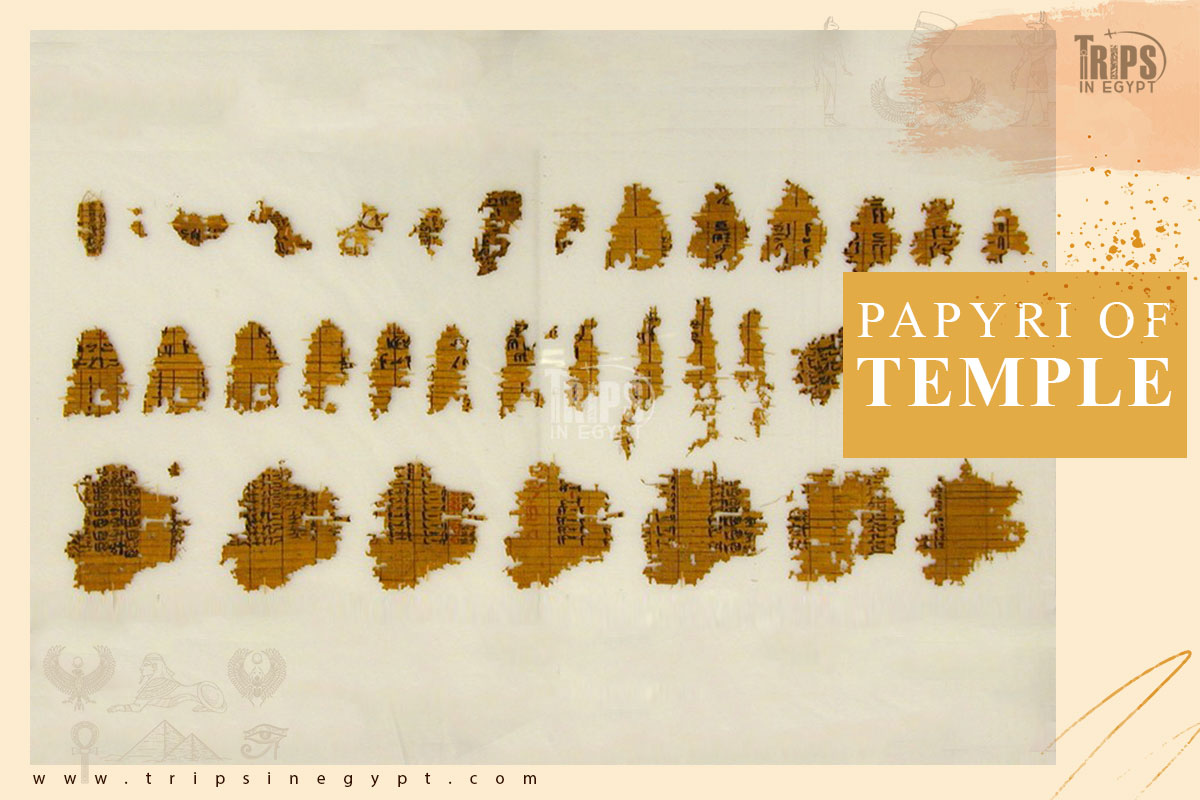
Abusir is famous for a number of reasons, one of which include the finding of the “Abusir Papyri” which is the largest find of ancient papyri that date to the old kingdom that belong to Absuir funerary cult which belong to king Neferirkare Kakai.
This discovery was made by the Czech Institute of Egyptology of the Faculty of Arts, Charles University in Prague which has been conducting excavations since 1976. The place even holds catacombs in the town of Busiris that belong to king Pliny (24 – 79 AD).

Ramesses II Temple At Abusir
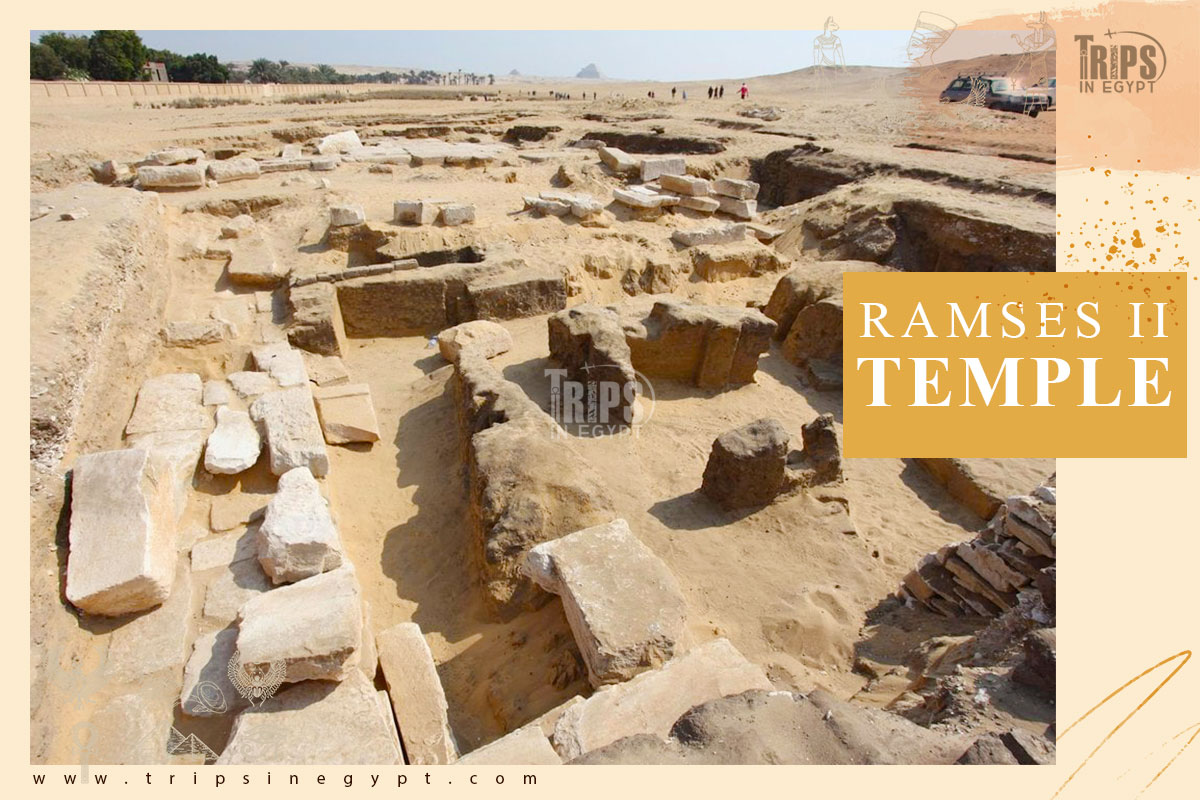
Ramesses the Great temple is a magnificent archaeological wonder which is found 500 m southeast of the pyramids near a cultivated desert. Limestone was used to create this golden temple which was three cellars, a small hall that had 4 columns, and a great courtyard that has mudbrick walls that possess 10 limestone columns.
Within this limestone, the temple is a massive archaeological creation filled with mud bricks with a pylon and a number of magazines. This temple is made for the solar cult which is dedicated to Amun, Ra, and Nekhbet. Some of the remains of the pyramid hold some titles which relate to Ramses II.

Conclusion
Abusir Necropolis is a magnificent archaeological gem that was established to achieve immortality. Through our Egypt tours and Nile cruises, everyone will have the most magnificent adventure across the blessed boundaries of time.
Great vacation for 4 days in Cairo Egypt accompanied by an e...
Duration
4 Days / 3 Nights
Availability
Everyday
An Incredible 5 days Cairo & Alexandria tour package to expl...
Duration
5 Days / 4 Nights
Availability
Everyday
Explore Egypt's ancient wonders on a 6 days vacation to Cair...
Duration
6 Days / 5 Nights
Availability
Everyday
Breathtaking 7 days Cairo, Luxor & Hurghada holiday to explo...
Duration
7 Days / 6 Nights
Availability
Everyday
FAQ
How many pyramids are there in Abusir?
Abusir has about 14 pyramids that date to the 5th dynasty which are found 12 km south of the pyramids of Giza and 2.5 kilometers north of Sakkara. Some of the most incredible pyramids include Sahure, Niuserre, and Neferirkare.
When was the Abusir pyramid built?
The pyramids complex of Abusir was built in the fifth dynasty between 2498 and 2345 BC to have some of the most spectacular pyramids which belong to the kings of Neferirkare, Sahure, and Neuserre.
Where is the unfinished pyramid?
The unfinished pyramid of Neferefre is located southwest of Neferirkare's pyramid in the Abusir necropolis found between the Giza plateau and Saqqara.
Who was buried in Abusir?
Abusir has a number of glorious tombs that belong to a number of influential people such as Neferirkare, Sahure, and Neuserre who lived during the 5th dynasty.
What Should I Wear While Being in Egypt?
You should wear whatever you want. It is advised to wear something light from cotton or linen, comfortable and put on sunblock during your time in Egypt in the summer and wear comfortable footwear like a closed-toe shoe to sustain the sandy terrain.
What to Pack for Your Egypt Tour?
You should bring a brimmed hat and sunglasses if you not used to the Egyptian sun &pack everything you could ever need and put in a small bag so you could move easily between your destinations.
Are All Nile Cruises Available at Any Time?
Yes, it is available all years. as the Nile from Aswan to Luxor takes three to four days of sailing on Monday, Wednesday and Friday for the total cost of 600$ and the Nile cruise from Luxor to Aswan take four to five days in Saturday, Monday and Thursday for the coast of 650$.
Why book Trips in Egypt?
We have experience in vacation planning for more than 10 years & our staff consists of the most professional operators, guides and drivers who dedicate all of their time & effort create the perfect vacation. All of our tours are customized by Travel, Financial & Time advisors to fit your every possible need during your time in egypt. we always keep in mind that your safety & comfort are our main priority until you return home.
Is it safe to travel to Egypt?
Yes, it is absolutely safe to travel to egypt, You will feel secure in Egypt as the current atmosphere of the country is very peaceful after the government took powerful measures like restructuring the entire tourist police to include all the important and tourist attractions in Egypt and construct an entire environment dedicated for ensuring the lives of all tourists.
What are Egypt's Visa Requirements?
They are very simples, If you want to apply for a Visa On Arrival that lasts for 30 days then you should be one of the eligible countries(check the link), have a valid passport with at least 6 months remaining and pay 25$ USD entry fee in cash. As for the E-Visa for 30 days, you should have a valid passport for at least 8 months, complete the online application, pay the e-visa fee then print the e-visa to later be presented to the airport border guard. You could be one of the countries eligible for a free visa for 90 days.
What is the Weather is Like?
The temperature of Egypt ranges from 37c to 14 c, Summer in Egypt is somehow hot and winter is cool and mild but sometimes it becomes cold at night. The average of low temperatures vary from 9.5 ¡ÆC in the wintertime to 23 ¡ÆC in the summertime and average high temperatures vary from 17 ¡ÆC in the wintertime to 32 ¡ÆC in the summertime while the temperature is moderate all along the coasts.
What is the Best Time of Visit Egypt?
It is known the best time to travel to Egypt is in the winter from September to April as the climate becomes a bit tropical, a warm atmosphere with a winter breeze. You will also be notified a week before your trip if the weather is unsafe or if any changes have been made.
Should I Give Tips in Egypt?
It is totally up to you, but if you choose to you can tip the servers at your restaurant 5-10% by handing it to them directly and 5 Egyptian Pounds as a general tip of anyone.
Can I Enter the Pyramids?
Yes, you can enter the pyramids for the small fee of 20$.
How to Enjoy Egypt During Ramadan?
Ramadan is a special time of year for Muslims that should be celebrated by non-Muslims and feel the essence of the Islamic culture. You can fast with the Muslim or just observe but you are always welcome to join the celebrations and festivals.


Share Your Comment